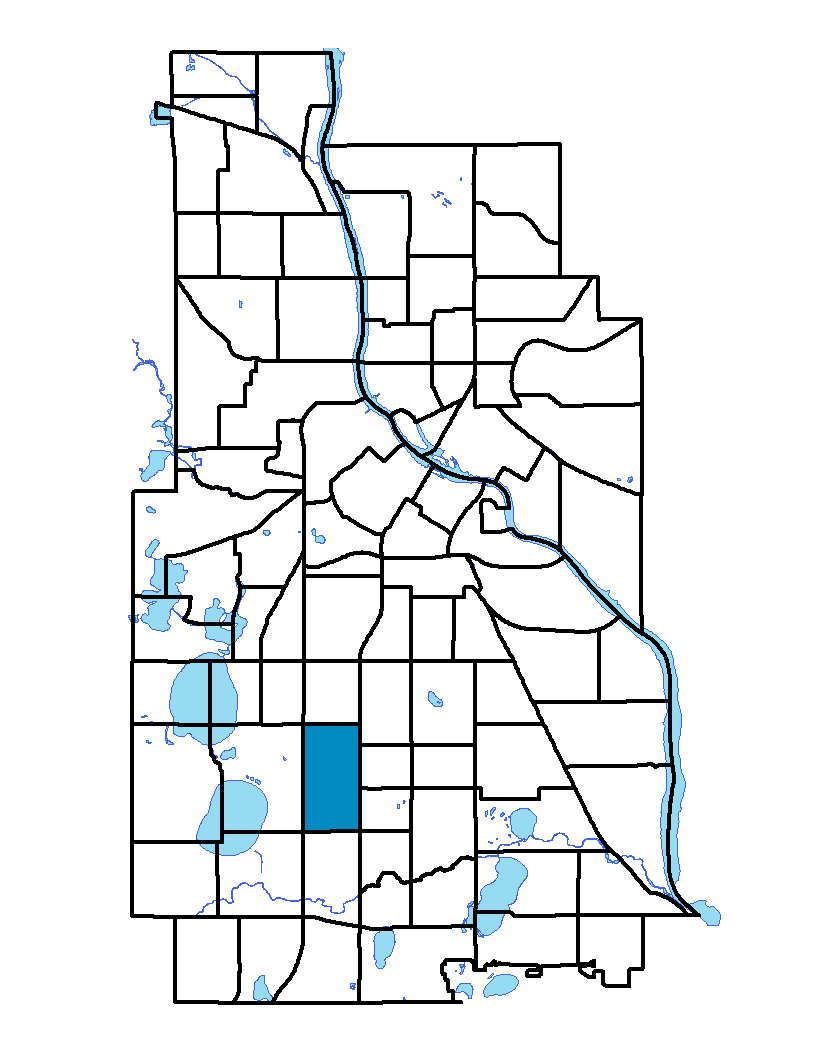The neighborhood is located in Minneapolis' Southwest community between Interstate 35W on the east and Lyndale Avenue on the west. The northern extent is 36th Street, and 46th Street is the southern boundary. King Field is named after Colonel William S. King, ex-congressman and a prominent figure in national affairs who lived in Minneapolis in the 19th century and was active in the anti-slavery struggle. The King Field neighborhood became part of Minneapolis in 1887 when the southern border of Minneapolis was extended from 38th Street to 54th Street. King Field is mainly a residential area with three-fourths of its single-family houses built before 1920. The King Field neighborhood has a number of amenities including churches, schools, a park named after Dr. Martin Luther King Jr., and three- to four-dozen small businesses.
To learn more about the neighborhood association visit: www.kingfield.org
Indicator Details
|
Indicators |
Primary Domain | Indicator Value | Rank | Tier |
|---|---|---|---|---|
| Access to Mainstream Financial Services | Economic Health | 19.6% | 32 | Middle |
| Access to Parks and Open Space | Natural Areas | 3.5% | 55 | Middle |
| Adult Educational Attainment | Educational Opportunities | 95.8% | 23 | Top |
| Age of Housing | Housing | 92.9% | 61 | Bottom |
| Blood Lead Levels in Children | Housing | 6.2% | 63 | Bottom |
| Business Retention | Economic Health | -1.2% | 66 | Bottom |
| Chronic School Absence | Health Systems and Public Safety | -% | - | Data N/A |
| Commute Mode Share | Transportation | 26.9% | 49 | Middle |
| Employment Rate | Employment Opportunities | 78.4% | 7 | Top |
| Excessive Housing Cost Burden | Housing | 19.7% | 12 | Top |
| Food Desert | Neighborhood Characteristics | 33.3% | 2 | Top |
| High School Graduation Rate | Educational Opportunities | -% | - | Data N/A |
| Household Transportation Costs | Transportation | 17.6% | 48 | Middle |
| Local Business Vitality | Economic Health | 63.0% | 17 | Top |
| Long-Term Unemployment | Employment Opportunities | 3.2% | 10 | Top |
| Low Birth Weight | Health Systems and Public Safety | 10.7% | 63 | Bottom |
| Motor Vehicle Collisions | Health Systems and Public Safety | 4 | 32 | Middle |
| Offsite Alcohol Outlets | Neighborhood Characteristics | 0.7 | 3 | Top |
| Pedestrian Connectivity | Transportation | 83.6 | 80 | Bottom |
| Preschool Enrollment | Educational Opportunities | 60.7% | 28 | Top |
| Preventable Hospitalizations | Health Systems and Public Safety | 4.1 | 59 | Bottom |
| Proximity to Brownfield Sites | Environmental Hazards | 2.0% | 29 | Top |
| Proximity to Superfund Sites | Environmental Hazards | 0.0% | 1 | Top |
| Public Assisted Households | Employment Opportunities | 13.1% | 36 | Middle |
| Reading Proficiency | Educational Opportunities | -% | - | Data N/A |
| Residential Mobility | Social Cohesion | 81.4% | 38 | Middle |
| Residential Proximity to Traffic | Environmental Hazards | 27.6% | 67 | Bottom |
| School Proximity to Traffic | Environmental Hazards | -% | - | Data N/A |
| School Readiness Scores | Educational Opportunities | -% | - | Data N/A |
| Toxic Releases from Facilities | Environmental Hazards | 0.0% | 1 | Top |
| Transit Accessibility | Transportation | 373.3 | 31 | Middle |
| Travel Time to Work | Employment Opportunities | 22.6 minutes | 49 | Middle |
| Tree Cover | Natural Areas | 27.9% | 50 | Middle |
| Vacancy Rates | Housing | 4.9% | 18 | Top |
| Violent Crime | Health Systems and Public Safety | 39.3 | 32 | Middle |
| Voter Participation | Social Cohesion | 37.7% | 16 | Top |
| Walkability | Neighborhood Characteristics | 67 | 33 | Middle |

